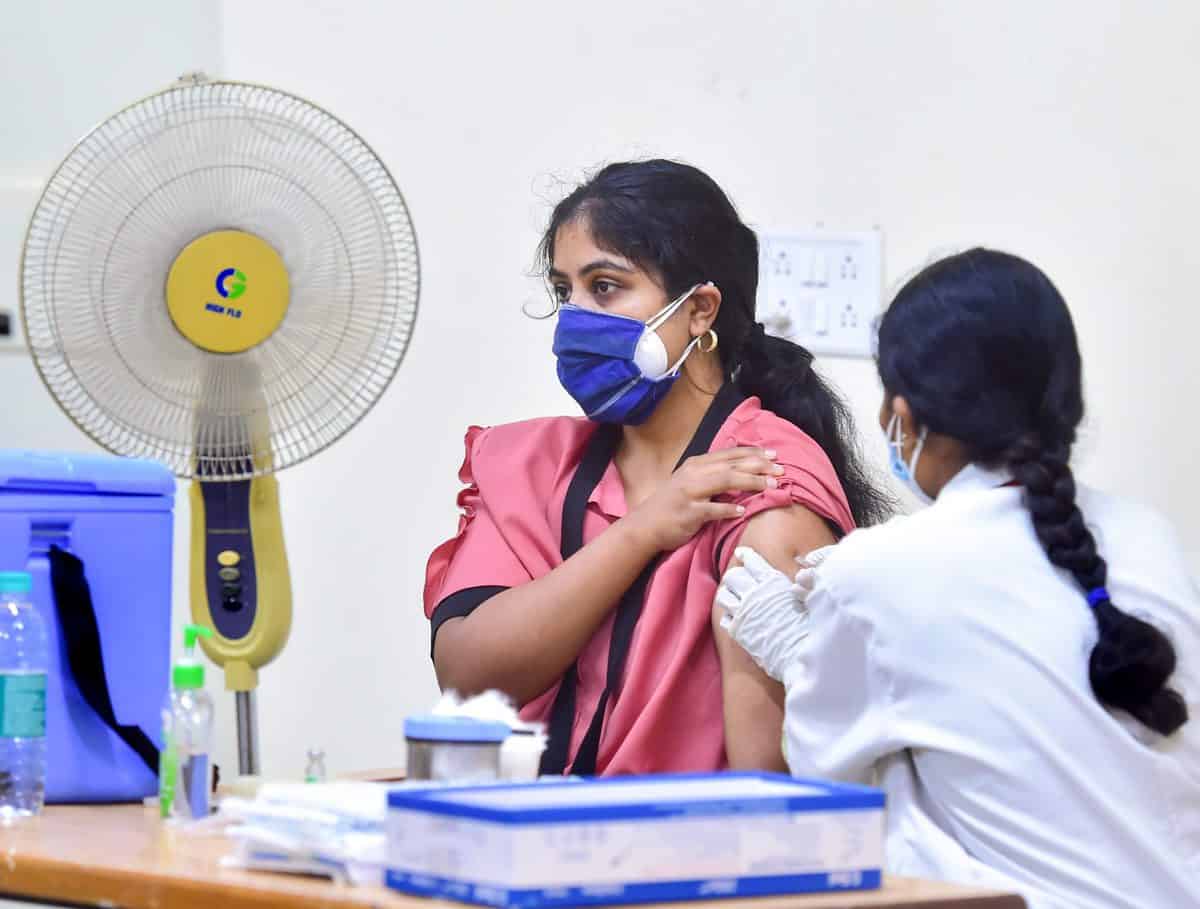Almost six months after the vaccination drive began in India and with over 22 crore people receiving at least one dose of COVID-19 vaccine, women lagged behind in the beneficiaries, a siasat.com analysis showed.
Out of the total number of people who have received at least one dose of the vaccine, 53.64 per cent of them are men while only 46.35 per cent are women. In other words, of every 1000 men, 863 women are vaccinated.
With the second wave of the COVID-19 extracting a heavy toll on the citizens of India, people have gravitated towards vaccine centres, trying their best to get themselves and their families inoculated. Even so, the government data shows a disparity in the distribution of vaccines as women fall behind in the rush to take the jab.
This track is disrupted in only three states — Kerala, Himachal Pradesh, and Chhattisgarh, where the converse is true. More women than men have been vaccinated in the three states.
Population reports by Niti Aayog in the year 2015 show that there are 1000 males for every 900 females. Even after accounting for this skewed sex ratio, the gap in the vaccination of the two genders is troubling.
The cause of this discrepancy could be a combination of many smaller factors. India’s fifth National Family Health Survey states that of all the women surveyed, only 56 per cent urban women and 34 per cent rural women have ever interacted with the internet, while 73 per cent and 55 per cent of urban and rural men respectively have done the same. This points towards a greater lack of access to internet facilities in women, which is necessary for making a vaccine registration.
Workplaces are conducting vaccine drives for all their employees, and a lower percentage of working women widens the gap.
Pregnant or lactating mothers are wary of taking anything that might affect their child. There is a vaccine hesitancy among the general populace which is further exacerbated by baseless rumours and fear mongering.
Soon after vaccines were made available for the masses, fake news questioning its safety for menstruating and lactating women started making rounds in WhatsApp group chats. A particularly misleading but viral post claimed that women’s “immunity is very less” in the five days leading up to and after their periods. The rumours were firmly negated in government conferences after they reached the ears of medical professionals.
Rumours like these add to the hesitancy people have about vaccines and deter them from seeking it out.
In stark contrast, despite having a skewed gender ratio with more men than women like India, countries like the USA are witnessing a higher percentage of women getting Covid-19 vaccines, as compared to men. In a report, TIME states that part of the reason behind this imbalance could be because women have long been more proactive towards healthcare.

